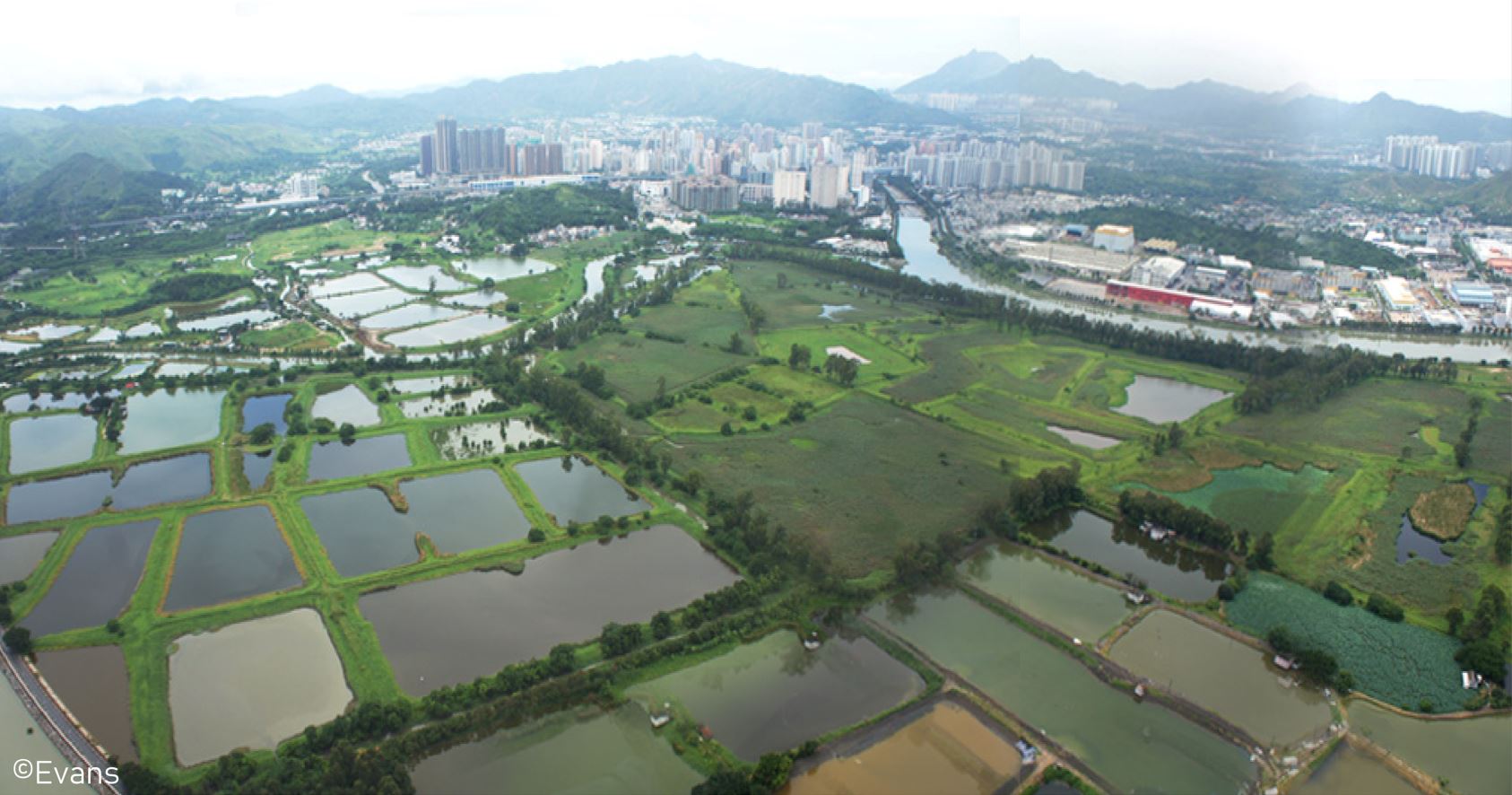南生圍住宅項目上訴得直 濕地恐未收回保育已被破壞
政府去年提出發展「北部都會區」,當中建議收回包括南生圍在內嘅后海灣濕地作保育用途。可是收地未有詳情,濕地已經面臨發展威脅。城規會上訴委員會於一月公布,以三比二有條件通過南生圍發展項目 (A/YL-NSW/242) 上訴。

 南生圍各類濕地生境
南生圍各類濕地生境
南生圍擁有不同濕地生境,如蘆葦叢、濕草地、仍然運作魚塘以及荒廢魚塘,為不同水鳥提供棲息和覓食空間,具高生態價值。是次上訴得直的發展項目,曾於2017年被城規會否決,如今捲土重來,意味南生圍將可興建28幢19至25層高住宅大樓,一旦落實,將帶來以下影響,永久損害后海灣濕地的生態完整性。
- 計劃興建的高層住宅座落於「濕地保育區」,屬於濕地保育的核心區域。發展項目將導致逾10公頃濕地永久損失。
- 發展商強調已劃出400米作緩衝區遠離鸕鷀棲息地。然而,根據2018年的記錄,該住宅範圍與普通鸕鷀的晚間棲息地,以及香港特有米埔屈翅螢的繁殖地,最短距離甚至不足100米。發展正位於濕地核心區,發展商提出所謂的「緩衝區」,根本難以成立,更無法減少對雀鳥飛行路線的影響,甚至會帶來嚴重光污染問題,威脅鸕鷀棲息地及米埔屈翅螢繁殖地。
- 28幢19至25層高住宅,連同140幢3層高樓房,不但破壞天然景觀,新增的6,500人口,亦會干擾周邊生態環境及重要物種。
- 項目包括在山貝河興建一條行車天橋,連接南生圍及元朗工業邨,助居民及遊客進出。不過發展商並沒有將這重大工程納入項目申請範圍,亦沒有提供相關詳細評估環境影響。
- 除了南生圍發展項目,以及已經獲批的豐樂圍發展項目,附近仍有不少大型住宅發展申請,它們將對后海灣生態將造成重大累積影響。
對於上訴委員會批准在如此生態敏感的地方發展高層住宅,甚至同意項目能夠做到「不會有濕地淨減少」,認可發展商的措施能夠彌補發展帶來的破壞,香港觀鳥會感到失望。我們促請政府
盡快收回后海灣 (包括南生圍及甩洲在內) 濕地,否則過去30年保育后海灣的努力,將付諸流水。
Development taking precedence over conservation? Nam Sang Wai development project won appeal, putting Deep Bay wetlands at risk
The Northern Metropolis Development Strategy proposes land resumption of Deep Bay wetlands (including Nam Sang Wai) for conservation. However, it was announced in January that the Town Planning Appeal Board granted conditional approval of Nam Sang Wai development project (A/ YL-NSW/242) by a 3:2 majority.

 A wide range of wetland habitats in Nam Sang Wai
Nam Sang Wai consists of a wide range of wetland habitats, including reedbeds, wet grasslands, active and abandoned fishponds. Such habitat diversity provides important roosting and foraging ground for various water bird species and is of high ecological value. The development project in Nam Sang Wai, once rejected by the Town Planning Board in 2017, proposes development of 28 blocks of residential building (19 to 25-storey). If the project goes ahead as planned, it will inflict permanent damage to the ecological integrity of the Deep Bay wetlands.
A wide range of wetland habitats in Nam Sang Wai
Nam Sang Wai consists of a wide range of wetland habitats, including reedbeds, wet grasslands, active and abandoned fishponds. Such habitat diversity provides important roosting and foraging ground for various water bird species and is of high ecological value. The development project in Nam Sang Wai, once rejected by the Town Planning Board in 2017, proposes development of 28 blocks of residential building (19 to 25-storey). If the project goes ahead as planned, it will inflict permanent damage to the ecological integrity of the Deep Bay wetlands.
- The proposed site for high-rise residential development is within the Wetland Conservation Area (WCA), which is part of the core area for wetland conservation. The project would lead to a direct and permanent wetland loss of 10.4 hectares.
- The developer emphasized that there will be 400m buffer area for the Great Cormorant roosting sites. However, according to the record in 2018, part of the residential area was less than 100m away from the important night roosting site for Great Cormorant, and the breeding ground of endemic Hong Kong Bent-winged Firefly. As the development is located within the wetland core area, the buffer area claimed by the developer is simply unrealistic, and would inevitably obstruct the flight paths of birds and cause severe disturbance like light pollution on both roosting Great Cormorant and breeding Hong Kong Bent-winged Firefly.
- Not only would the 28 residential buildings (19-25 storeys) and 140 houses irreversibly destroy the natural landscape, but the population of 6,500 habitants to be introduced there would also disturb the surrounding habitats and wildlife.
- A new bridge will be built across Shan Pui River, connecting Nam Sang Wai and the Yuen Long Industrial Estate for easy access to Nam Sang Wai. However, such a crucial component of the development plan was not included within the application site boundary, and the ecological impacts of the proposed bridge were not adequately assessed.
- Apart from the Nam Sang Wai development and the approved Fung Lok Wai project, several planning applications of large scale residential developments are pending review. All these would have adverse cumulative impact on the ecological integrity of the Deep Bay area.
We are disappointed that the Appeal Board approved the high-rise residential development in such an ecologically sensitive area, and even agreed that the project could achieve “no-net-loss in wetland”, and that the developer's mitigation measures could compensate for all the ecological loss brought by the proposal. We urge the government to resume the wetlands in Deep Bay (including Nam Sang Wai and Lut Chau) as soon as possible, and not to break the foundation stone laid for Deep Bay wetland conservation in the past 30 years.
[
Last edited by HKBWS Suet Mei at 28/02/2022 19:24 ]


